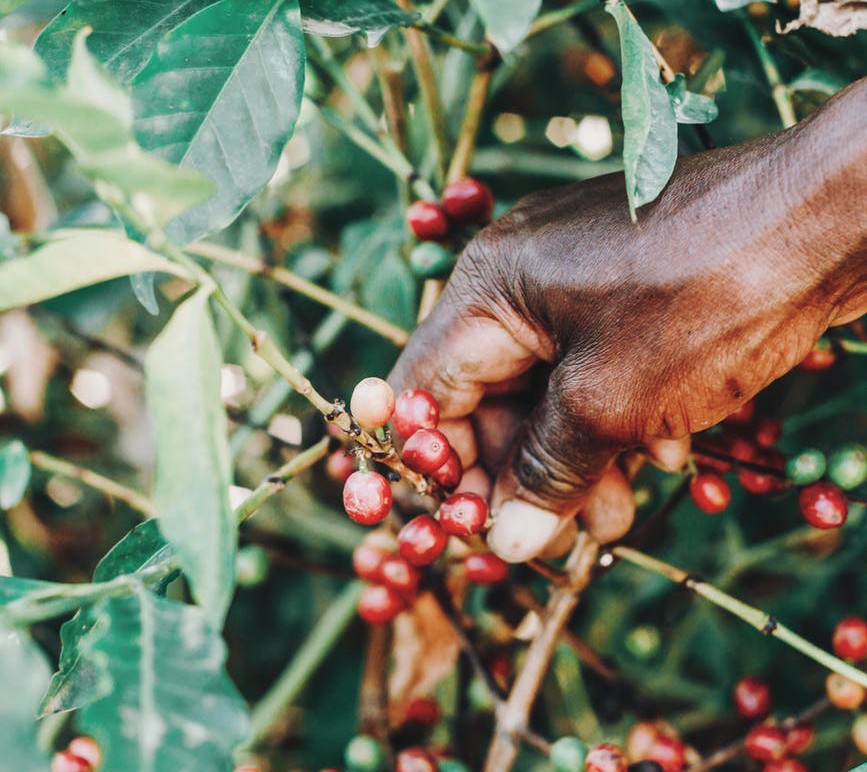Coffee Cherry: What Is It & How Does It Taste?
It’s a pretty well-known assumption that coffee grows on a tree, but did you realize that coffee is actually a fruit? The name bean can be quite deceiving. However, the typical roasted bean that we often associate with this caffeinated phenomenon is not the only way to look at it. Quite the opposite, the natural, non-roasted fruit actually is plump and called a coffee cherry often with a bean in the middle.
You might wonder, what does a coffee cherry taste like, or can you eat coffee cherries at all? It’s a fair question to ask? Why isn’t this more popular in the fruit world? We are going to talk about all the uses of coffee cherries and whether they are a snack or not, so stick around!

What is it?
As we said, a coffee cherry is a fruit that grows on a tree and surprisingly produces white blossoms. This tree does produce beans, as they are the seeds inside of the fruit. However, what about the rest of the fruit? There are a few different layers to the fruit. On the outside, it has hard skin. In contrast, the inside has a soft and grape-like texture that surrounds the cherry.
As far as appearance, the fruit is red and looks like a berry in a way, hence the name coffee cherry. Imagine those small red berry trees that seemed to be everywhere growing up that weren’t edible. These, however, are very much edible but might not taste how you would expect.
How Does it Taste?
There are a few different layers to the taste of coffee fruit. The hard skin that we mentioned is surprisingly bitter and unpleasant to most people. However, when you make it past the skin into the soft interior, it turns into a sweet, squishy texture. The seed, also known as the coffee bean, is what we are all familiar with, however, there is a long process from a raw coffee bean to what we know as coffee.
Overall, the flavor of coffee fruit is quite nuanced, so if you don’t like one part, it’s very likely that you can still like another. However, there is a big downside to coffee cherries that have prevented them from growing in popularity like other fruits. There are little to no nutritional benefits. This can be a bit shocking considering fruit’s often associated with healthy snack options, but most fruit’s a hybrid or refined version of the natural fruit.
This has not been the case for coffee cherries. It’s made up of mostly seed and skin, so there isn’t much to bite into to become a popular snack. While there aren’t any negative factors of eating the coffee fruit, it simply isn’t a huge pro or con in either direction in flavor or nutrition.
The fruit does however have some caffeine in it, aside from the bean that we are already quite familiar with its caffeine benefits. The ratio is much less, but it does provide a tad bit of kick when you give it a crunch.
However, it’s important to note that the majority of the caffeine we get from beans is through the roasting process, so even the bean straight off the tree won’t have the extreme levels of caffeine as we would expect.
Another way that coffee cherries are utilized is in something called cascara. This is the skin of the fruit that is pulled off and dried to create a chewy treat. This is quite popular in Latin America by local farmers, so it can be a fun experience to give a taste whether you visit Latin America and try it fresh, or find it in a store locally.
Conclusion
As an overall takeaway, a coffee cherry is far more than just a bean and can be a treat to try every once in a while. However, it’s highly unlikely that this will be your new nightly snack out of lack of time to peel and nutritional benefits. Next time you see a coffee bean, you can now appreciate the background of where it came from and spot a coffee fruit if you are ever in an area where it grows! Go try one and see what you think!





